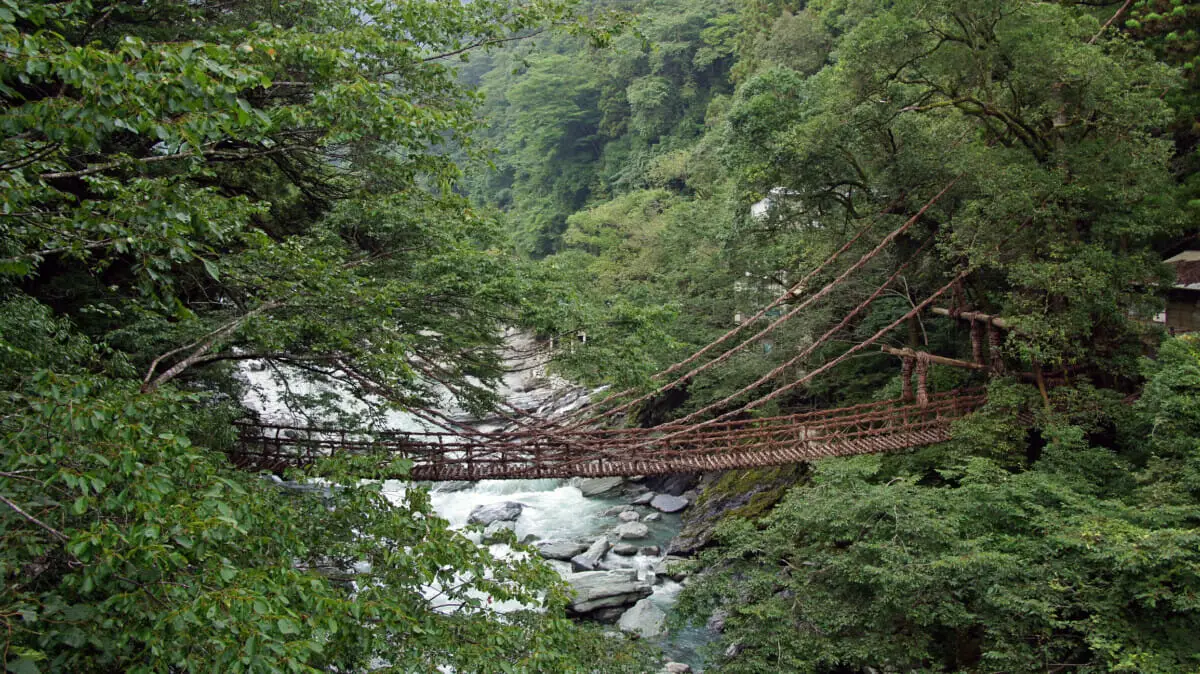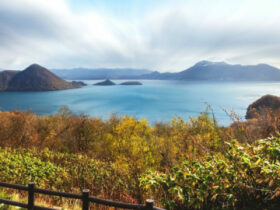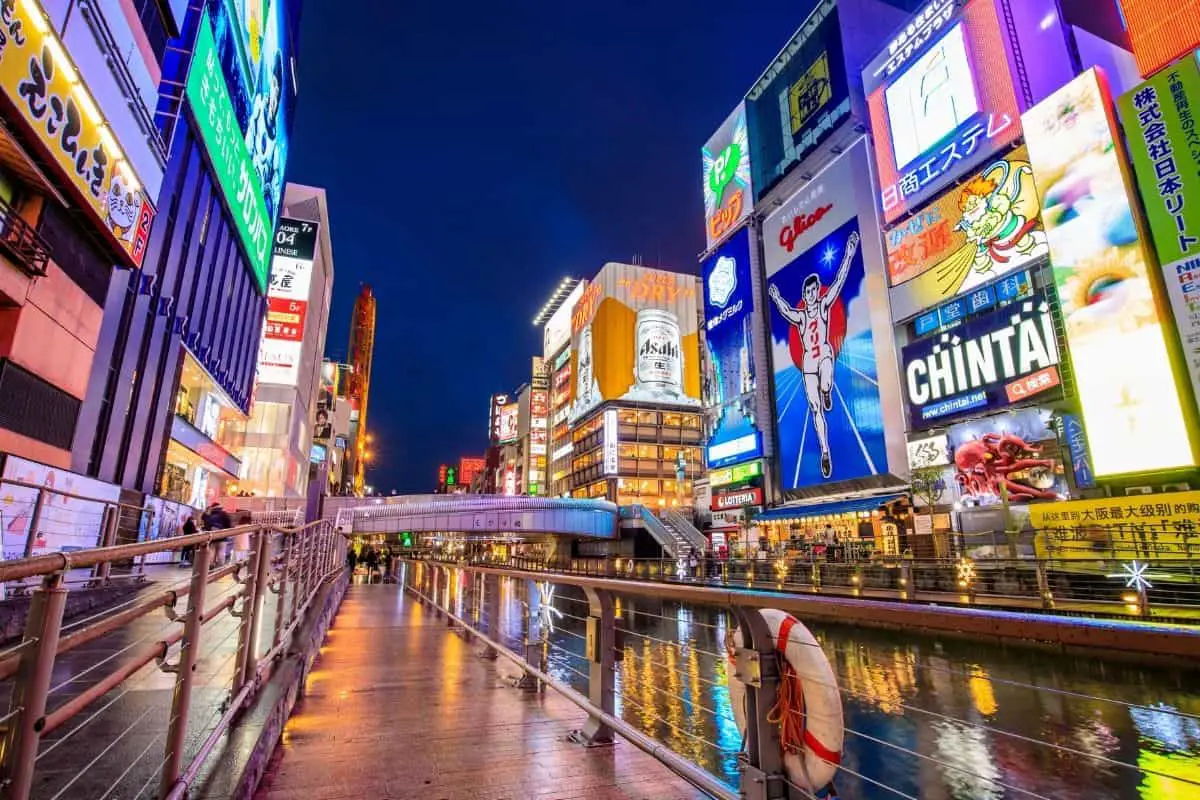Tucked away on the western side of Tokushima Prefecture is Iya Valley, called Iyakei (祖谷渓). This is in the heart of Shikoku Island that’s remote, secluded, and mountainous.
The steep slopes and rocky gorges are the area’s inherent charm and character. It’s quiet, peaceful, and an absolute paradise.
A Deep and Difficult Journey
Before modern transportation, the only way to get to Iya Valley was by crossing over vine bridges called kazurabashi. Even with modern roads, it’s a difficult and somewhat dangerous trek.
The only thing connecting this place to the outside world is a single, long, narrow, and winding road.
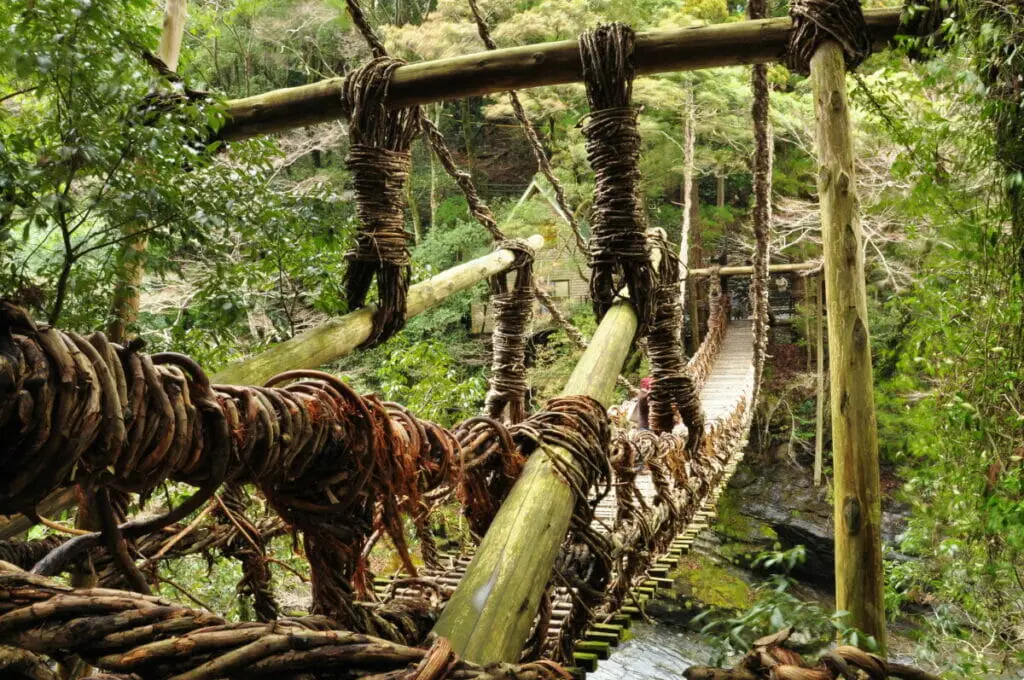
There are deeper parts to Iya Valley that are even more difficult for people to access. But that’s the beauty and draw of the place.
It provides a rural cultural and traditional experience that’s fading away in the more modern metropolitan places of Japan.
The History of Iya Valley
Due to the difficulty in reaching this area, it was a refuge for many samurai. This is especially true for members of the Taira Clan, who fled after losing the Gempei War between 1180 AD and 1185 AD, at the end of the Heian Period.
Their descendants still live in Iya Valley and have so for hundreds of years.
Alex Kerr
After falling in love with Iya Valley, the author of “Lost Japan,” Alex Kerr, brought ancient Japan back to life. He bought Chiiori, an ancient farmhouse, and restored it.
He currently operates it as a nonprofit project to show people the history and tradition of Japanese life. Kerr has plans to open several other areas in the region like it just for tourists.
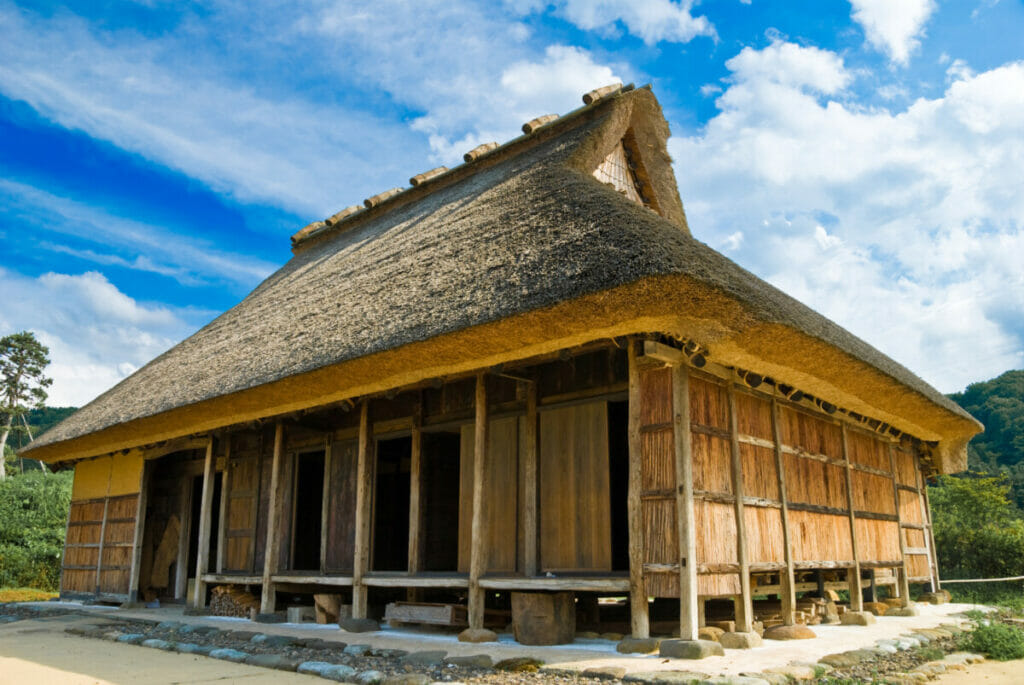
Two Sides: Oku Iya; Nishi Iya
There are two areas of the Iya Valley: Oku Iya (Iya’s inner sanctum) and Nishi Iya (western Iya). The western area is more accessible and developed with public transportation to major attractions.
The inner or eastern side of Iya is further back into the valley and requires a private means of transport.
Nishi Iya
Nishi Iya is notorious for its onsen, or hot springs. There are two hotels worth noting in this regard: Iya Onsen Hotel and Shin-Iya Onsen Hotel Kazurabashi.
They both offer daytime admission to the hot springs as well as overnight stays.
Iya Onsen Hotel sits on the slope that overlooks the valley below with hot springs located all along the river.
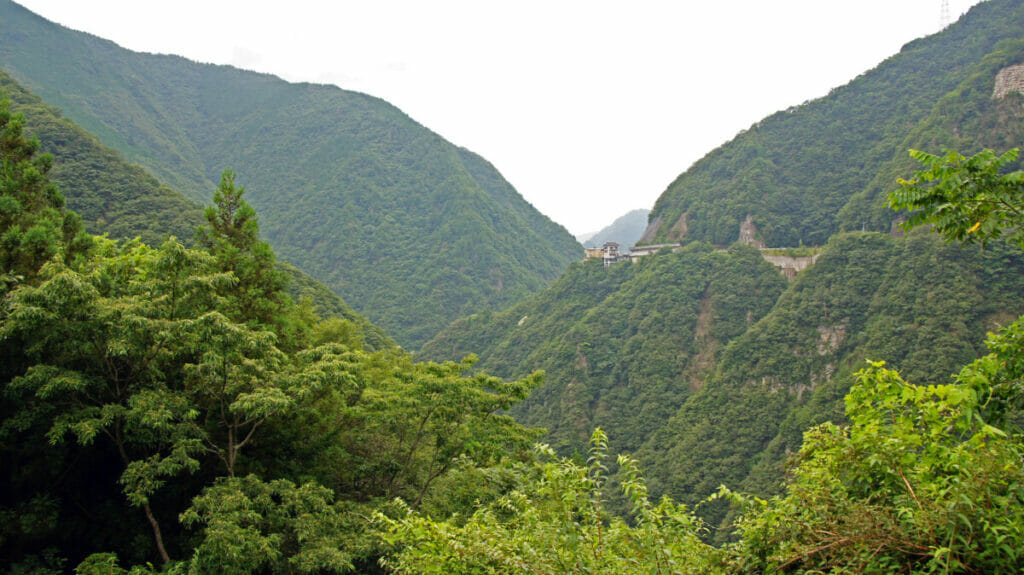
A cable car connects it to the upper buildings of the hotel and the baths are always around a cozy temperature of 102°F (39°C).
Shin-Iya Onsen Hotel Kazurabashi offers three baths outdoors. One is for women, another for men, and yet one more for both genders.
These have beautiful views of Iya Valley and reside high above the hotel on the mountainside. A short cable car connects the hot springs to the hotel.
Iya Kazurabashi Bridge
But the crowning feature of this side of Iya Valley is the Iya Kazurabashi Bridge. This is one of the vine suspension bridges still standing and was one of the 13 available in the past to access the area.
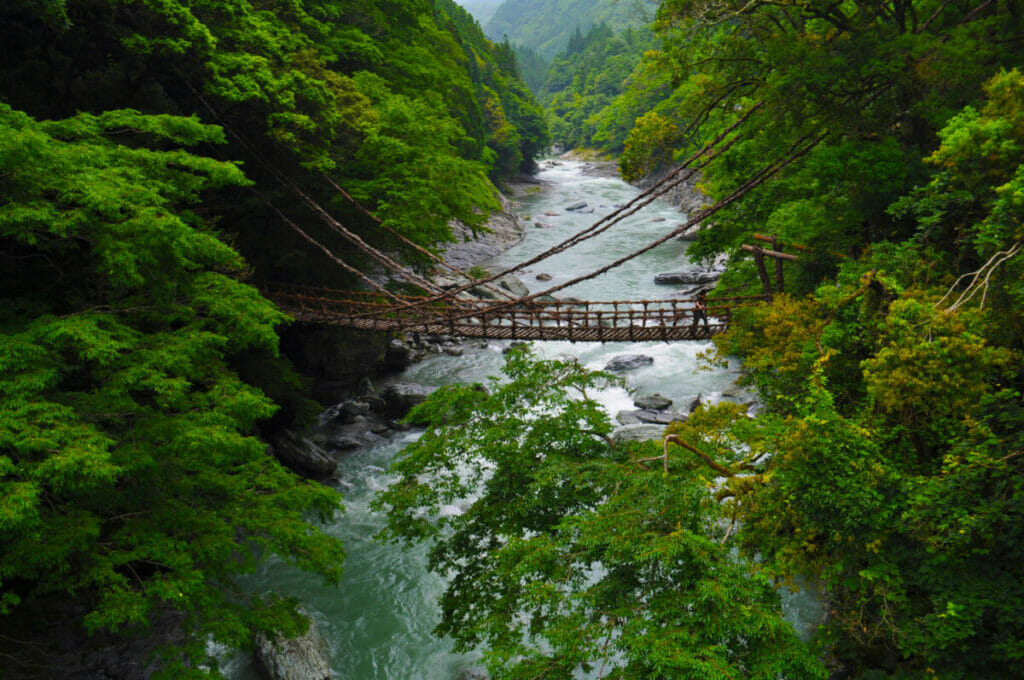
Iya Kazurabashi is the biggest and easiest to reach.
It’s 147½ feet (45 meters) long and sits about 46 feet (14 meters) above the river. For safety, they’ve reinforced the vines with steel cables. Also, it costs ¥550 ($4.40 USD) to cross.
Oku Iya
One of the best things about Oku Iya is Mount Tsurugi. This stands just over one mile (1955 meters) high and it resides at the farthest end of Iya Valley.
A chairlift takes visitors up the mountain where you can hike it the rest of the way on foot to the summit. It takes all of 30 minutes and it’s not a difficult climb.
Husband and Wife Bridges
The Oku-Iya Kazurabashi Bridges, called Oku-Iya Nijū Kazurabashi (奥祖谷二重かずら橋) are a remarkable sight. There are two of these resting next to each other with a third smaller bridge nearby.
These also cost ¥550 ($4.40 USD) to cross but they are deep in the valley, close to Mount Tsurugi.
Called the Husband and Wife Bridges or Couples Bridges, they are distinct vine-made suspension bridges.
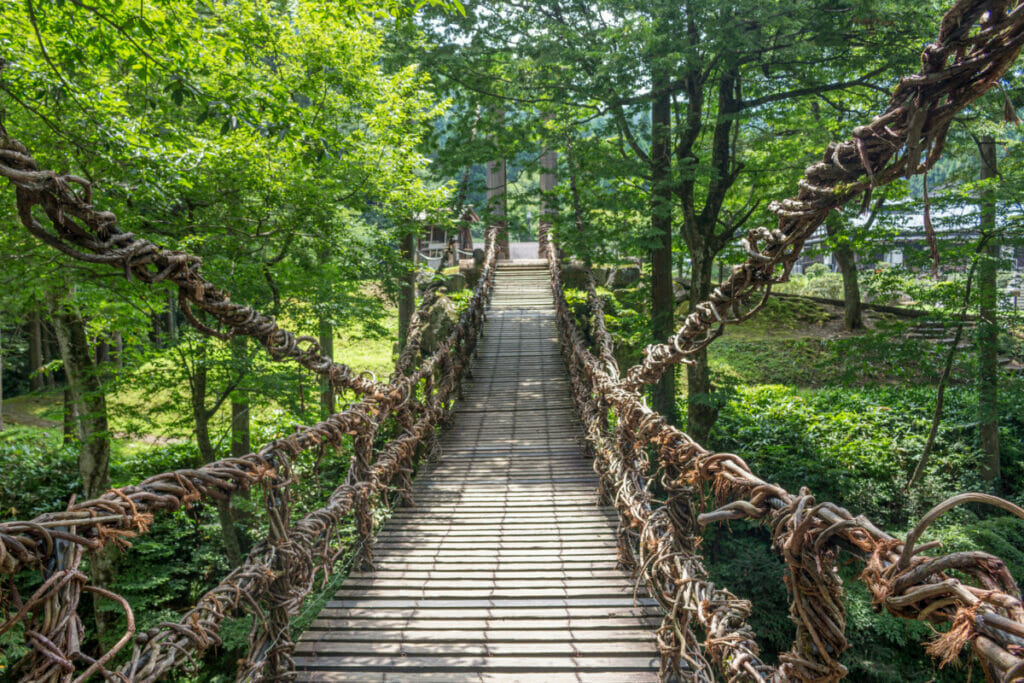
The Husband Bridge, or Otto no Hashi, is taller and longer than Tsuma no Hashi, or Wife Bridge. Stretching almost 144½ feet (44 meters), the Husband Bridge situates next to a waterfall across the river.
The Wife Bridge is 72 feet (22 meters) long and is further upstream. But, next to it is the Wild Monkey Bridge.
This has a cart with a rope for manual pulling, integral to being able to transport goods to and from the area. All three bridges connect to each other via a network of hiking trails that also have camping facilities.
Explore Iya Valley’s History
For a more tourist-targeted experience, there is the Higashi Iya History and Folk Museum and a restored Samurai House.
They offer a view of a traditional Japan that is not very visible in bustling metropolises around the country.
Higashi Iya History and Folk Museum
The museum is a great introduction for newcomers to the history of Iya Valley. There are exhibits of tools, clothing, household items, and other traditional objects native to the region.
The museum opens at 10 am and closes by 4 pm when in operation. They close on Wednesdays, on the weekends and for holidays. It costs ¥410 ($3.28 USD) to enter.
The Samurai House
But for some real flavor of the shogunate period of Japan, the Samurai House is a must-see. Nestled in the slopes of Iya Valley, it used to be the home of local village leaders.
You can view authentic samurai attire complete with armor, tools, and implements.
Bukeyashiki Kita-ke Historic House
It is slightly difficult to access. You either need a private vehicle or take a bus and the road is narrow. Plus, you will have to walk for an additional 45 minutes from the bus stop just to reach it. Admission is ¥310 ($2.48 USD).

